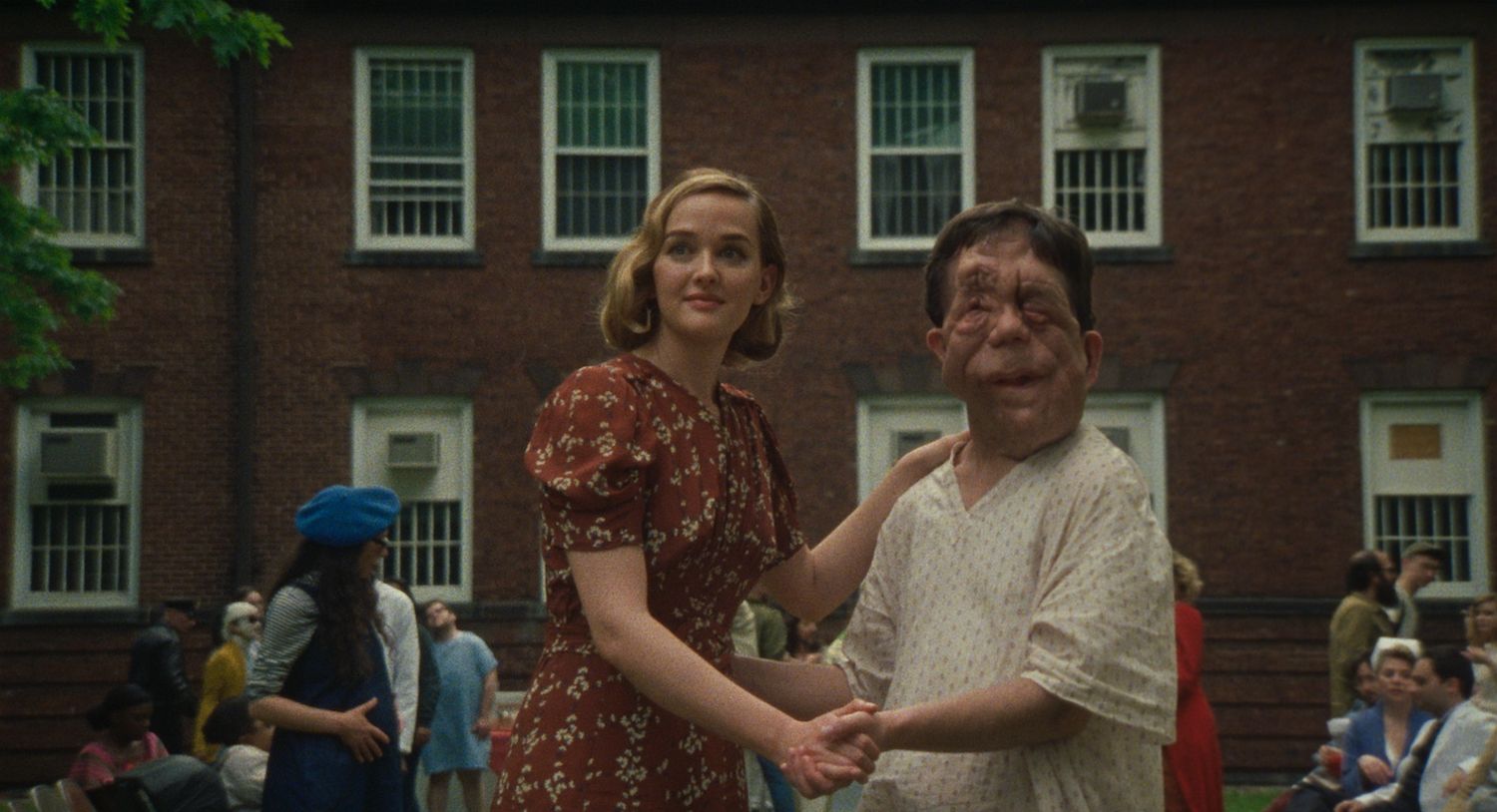Fantasia Film Review: ‘Chained for Life’
By Dennis Harvey
LOS ANGELES (Variety.com) – What if the “freaks” had made Tod Browning’s “Freaks”? That seems to be the guiding impulse behind Aaron Schimberg’s second feature “Chained for Life” as he follows his intriguing 2013 black-and-white dreamscape “Go Down Death” with an even more challenging mix of outre form and content. Easier to admire than to love, this fascinating meta-narrative involving a film crew making a quasi-horror movie about physical disabilities keeps viewers at a deliberate distance — the better to make us question the nature of what we’re seeing (and thinking).
In another era, “Chained for Life” might have found a place on the midnight movie circuit — albeit a temporary one, as the film (presumably named after the cheesy 1952 exploitation vehicle for Siamese twins Violet and Daisy Hilton) is a mite too intellectual in appeal to have rivaled the likes of “The Rocky Horror Picture Show” or “Eraserhead” (a film to which “Chained” bears a closer kinship): Cult devotees willing to make the repeat viewings that the pic’s layered gamesmanship seems to demand will do so at home, perhaps following a niche theatrical release.
After a long opening-scroll quote from late critic Pauline Kael musing on the convention (and usefulness) of actors being “more beautiful than ordinary people,” we are plunged into a nightmare of beauty imperiled. Blind, blonde Freda (Jess Weixler) walks the halls of a sinister private hospital circa 1940, interrupting a cosmetic surgery procedure by her Teutonic doctor-lover (Stephen Plunkett) and his stereotypically severe nurse Olga (Sari Lennick). But a noise interrupts the scene, which is indeed taking place at a hospital — but being acted out by performers working on a film; in fact, it’s the first American film by a pretentious European auteur referred to Herr Director (Charlie Korsmo, the kid from “Dick Tracy,” making his first screen appearance in two decades).
The film that Herr Director is making appears to be both a recycling and a riposte to lurid “B” potboilers of yore, with the vaguely Nazi-like doctor presiding over secret medical procedures and genetic experiments in which all human abnormalities can be eradicated — but at what cost? Mabel (Weixler) is a movie star slumming for art’s sake in this strange production, fending off the ill-concealed overtures of her vain leading man Max (Plunkett).
She’s more interested in getting close to her other co-star, Rosenthal, a man who like the actor playing him (Adam Pearson) has neurofibromatosis, a condition that results in non-cancerous but disfiguring nervous-system tumors. The “Elephant Man” appearance it lends gives him a monstrous pathos in the film-within-the-film. But on-set, Rosenthal is simply a friendly, self-deprecating, rather ordinary bloke in every way save appearance.
In any event, Mabel/Freda is attracted to him — though it’s difficult to tell whether her interest is sincere, based professionally on Method, or just politically correct. A traditional beauty among the oddballs (Herr Director has cast other “freaks” beyond Rosenthal, including such carny favorites as a Bearded Lady), she professes not to care about image even as she spreads her own actorly neuroses on the proceedings.
Keeping us consistently off-kilter, Schimberg’s script weaves unpredictably between scenes within the film-in-film, scenes being filmed, and the crew’s activities on location during off-hours. Soon he’s messing with our perception even further, including sequences that might turn out to be dreams, or rushes, or of ambiguous origin.
“Chained” plays games of reality or illusion that are reminiscent of an artsy, referential thriller like “Berberian Sound Studio”; there’s even a facially scarred killer purportedly running around in the vicinity of the film shoot. Yet its sinister elements are in quotes — while the everyday “reality” it portrays is ironic, humorous and good-natured. Schimberg and his collaborators keep throwing us off balance with self-conscious tonal and stylistic shifts that are sometimes satirical, often conspicuously schematic, but always create alienation. The film even pokes fun at its being a film: Shot on Super-16 (DP Adam J. Minnick’s images have a grainy old-school vibe), Herr Director brags that his movie can afford umpteen takes because it’s “just” digital.
There’s not so much a thesis as a spirit of inquiry guiding “Chained,” whose Brooklyn-based writer-director was born with a bilateral cleft palate, and whose work seems to generally deal with issues of disability and representation. He’s also a film programmer, which accounts for the density of cineaste references here, encompassing everything from “Beware the Holy Whore” to “The Muppet Movie.”
The tendency toward deconstructionism may irk viewers who want a patch of solid narrative ground to stand on. At times Schimberg’s gambits feel too coy, their aim too dry despite the sensational hooks. But more often than not, the immediate impact is engagingly droll, and there’s no questioning the overall adventurousness, confidence and originality. Every time we think Freda/Mabel has finally met a horrible fate, it turns out to be a ruse. Naturally, the fadeout suggests she may not be out of danger yet.
Weixler is an actress who can juggle any number of ambiguities in a role, as she’s illustrated since the offbeat comic-horror film “Teeth,” and she enters into the complicated spirit of things here with considerable dexterity. Plunkett and Lennik, meanwhile, are funnier simply as actors-playing-actors, and an unrecognizable Korsmo does a dead-on vocal impersonation of Werner Herzog. British TV presenter and anti-bullying activist Pearson, whose only notable prior acting role was as the Deformed Man opposite Scarlett Johansson in “Under the Skin,” provides a dose of down-to-earth charm in a movie that often seems to exist in its own alternative universe.
Though modestly scaled, “Chained for Life” is resourceful and deliberate in all its design choices, as well as skilled in its technical assembly; the occasions when it shows its seams are willful.

